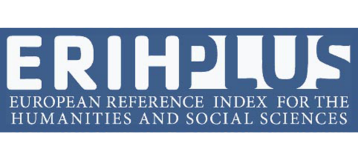Teoría de la mente y percepción social en adolescentes con TDAH y Trastorno negativista desafiante
DOI:
https://doi.org/10.37511/tesis.v15n1a5Abstract
The ability to detect emotional expressions or understand the social behavior of people in specific situations, corresponds to a skill that develops in early life and can be change when there is a disorder. The objective of this study was to describe and compare the theory of mind (ToM) and social perception in adolescents between 11 and 15 years with Attention Deficit Hyperactivity Disorder (ADHD) and Oppositional Defiant Disorder (ODD) in comorbidity (ADHD / TND ). The sample was composed of 30 subjects intentionally
chosen: 10 corresponded to the group of cases with ADHD, 10 to the group with ADHD + TND and 10 subjects of a Control Group (without apparent pathology). The Faux Pas test and Eyes Test (Baron-Cohen, O'Riordan, Stone, Jones & Plaisted, 1998; Baron-Cohen 2001), were ¿ applied. The results show significant differences between the two study groups and the control group in relation to the perception of emotional expressions and perception of social behavior. No significant differences were found between the two case groups (ADHD and ADHD + TND), with respect to the variables. Disorders whose neuroanatomical basis are a dysfunction in the fronto-striated circuits represent a deficit in social cognition that affects the perceptual, cognitive and emotional processes involved in social interaction, fundamentally in the adolescent stage.
Downloads
References
trastornos mentales, 5ta edición. Madrid: Editorial Medica Panamericana.
Barceló-Martínez, E., León-Jacobus, A., Cortes-Peña, O., Valle-Córdoba, S., & FlórezNiño, Y. (2016). Validación del inventario exploratorio de síntomas de TDAH (IESTDAH) ajustado al DSM-V. Revista Mexicana de Neurociencia, 17(1), 12-22.
Recuperado de
https://www.medigraphic.com/pdfs/revmexneu/rmn-2016/rmn161b.pdf
Baron-Cohen, S., O'Riordan, M., Stone, V., Jones, R & Plaisted, K. (1999). Recognition of
Faux Pas by Normally Developing Children and Children with Asperger Syndrome
or High-Functioning Autism. Journal of Autism and Developmental Disorders, 29
(5), 407–418. https://doi.org/10.1023/A:1023035012436
Baron-Cohen, S., Wheelwright, S., Hill, J., Raste, Y. & Plumb, I. (2001). The "Reading the
Mind in the Eyes" Test revised version: a study with normal adults, and adults with
Asperger syndrome or high-functioning autism. The Journal of Child Psychology
and Psychiatry, 42(2), 241-51. https://doi.org/10.1111/1469-7610.00715
Bora, E. & Pantelis, C. (2016). Meta-analysis of social cognition in
attention-deficit/hyperactivity disorder (ADHD): comparison with healthy controls
and autistic spectrum disorder. Psychological Medicine. 46(4), 699-716.DOI:
https://doi.org/10.1017/S0033291715002573
Brieber, S., Neufang, S., Bruning, N., Kamp-Becker, I., Remschmidt, H., HerpertzDahlmann, B., Fink, G. & Konrad, K. (2007). Structural brain abnormalities in
adolescents with autism spectrum disorder and patients with attention
deficit/hyperactivity disorder. Journal of Child Psychology and Psychiatry 48(12),
1251–1258 .https://doi.org/10.1111/j.1469-7610.2007.01799.x
Carrington, S. & Bailey, A. (2009). Are There Theory of Mind Regions in the Brain? A
Review of the Neuroimaging Literature. Human Brain Mapping, 30(2), 313–2335.
https://doi.org/10.1002/hbm.20671
Chen, M.-H., Chen, Y.-L., Bai, Y.-M., Huang, K.-L., Wu, H.-J., Hsu, J.-W., … Wu, Y.-T.
(2020). Functional Connectivity of Specific Brain Networks Related to Social and
Communication Dysfunction in Adolescents with Attention-Deficit Hyperactivity
Disorder. Psychiatry Research, 284, 1-32.
https://doi.org/10.1016/j.psychres.2020.112785
Golubchik, P. & Weizman, A. (2019). Poor performance of the ‘child Reading the Mind in
the Eyes Test’ correlates with poorer social-emotional functioning in children with
attention-deficit/hyperactivity disorder. International Clinical
Psychopharmacology, 35(2), 105-108. doi: 10.1097/YIC.0000000000000299.
Gómez-Restrepo, C., Aulíb, J., Tamayo-Martínez, N., Gil, F., Garzón, D. y Casas, G.
(2016). Prevalencia y factores asociados a trastornos mentales en la población de
niños colombianos, Encuesta Nacional de Salud Mental (ENSM) 2015. Revista
colombiana de psiquiatría, 45(S1), 39–49.
http://dx.doi.org/10.1016/j.rcp.2016.06.010
Güemes-Hidalgo, M., Ceñal González-Fierro, M. & Hidalgo-Vicario, M. (2017). Pubertad
y adolescencia. Adolescere, Revista de Formación Continuada de la Sociedad
Española de Medicina de la Adolescencia, 1, 7-22. Recuperado de
https://www.adolescenciasema.org/ficheros/REVISTA%20ADOLESCERE/vol5nu
m1-2017/07-22%20Pubertad%20y%20adolescencia.pdf
Joseph, J.K., & Devu, B.K. (2020). Prevalence of attention-deficit hyperactivity disorder in
India: A systematic review and meta-analysis. Indian Journal of Psychiatric
Nursing, 16, 118-25. doi: 10.4103/IOPN.IOPN_31_1
Levanon-Erez, N., Cohen, M., Traub Bar-Ilan, R. & Maeir, A. (2017). Occupational
identity of adolescents with ADHD: A mixed methods study. Scandinavian Journal
of Occupational Therapy, 24(1), 32-40.
https://doi.org/10.1080/11038128.2016.1217927
Llanos-Lizcano, L., Garcia-Ruiz, D., Gonzales-Torres, H. & Puentes-Rozo, P. (2019).
Trastorno por déficit de atención e hiperactividad (TDAH) en niños escolarizados
de 6 a 17 años. Revista Pediatría Atención Primaria, 21(83), e101-e108.
Recuperado de: http://scielo.isciii.es/scielo.php?script=sci_arttext&pid=S1139-
76322019000300004&lng=es&tlng=es.
Löytömäki, J., Ohtonen, P., Laakso, M., & Huttunen, K. (2019). The role of linguistic and
cognitive factors in emotion recognition difficulties in children with ASD, ADHD
or DLD. International Journal of Language & Communication Disorders, 55(2),
231-242. https://doi.org/10.1111/1460-6984.12514
Maoz, H., Gvirts, H., Sheffer, M. & Bloch, Y. (2017). Theory of Mind and Empathy in
Children With ADHD. Journal of Attention Disorders, 23(11),1331-1338.
https://doi.org/10.1177/1087054717710766
Mehta, T., Monegro, A., Nene, Y., Fayyaz, M. & Bollu, P. (2019). Neurobiology of
ADHD: A Review. Current Developmental Disorders Reports, 6, 235–240. https://
doi.org/10.1007/s40474-019-00182-w
Miranda, A., Berenguer, C., Roselló, B., Baixauli, I. & Colomer, C. (2017). Social
Cognition in Children with High-Functioning Autism Spectrum Disorder and
Attention-Deficit/Hyperactivity Disorder. Associations with Executive Functions.
Frontiers in Psychology, 8, 1-13. https://doi.org/10.3389/fpsyg.2017.01035
Miranda, A., Berenguer, C., Roselló, B., Baixauli, I. & Colomer, C. (2017). Social
Cognition in Children with High-Functioning Autism Spectrum Disorder and
Attention-Deficit/Hyperactivity Disorder. Associations with Executive Functions.
Frontiers in Psychology, 23 (8), 1035 . https://doi.org/10.3389/fpsyg.2017.01035
Mohammadi, M., Zarafshan, H., Khaleghi, A., Ahmadi, N., Hooshyari, Z., Mostafavi, S.,
Ahmadi, A., Alavi, S., Shakiba, A. & Salmanian, M. (2019). Prevalence of ADHD
and Its Comorbidities in a Population-Based Sample. Journal of Attention
Disorders, 1 –10. https://doi.org/10.1177/1087054719886372
Mohammadzadeh, A., Khorrami-Banaraki, A., Tehrani-Doost, M. & Castelli, F. (2019). A
new semi-nonverbal task glance, moderate role of cognitive flexibility in ADHD
children’s theory of mind. Cognitive Neuropsychiatry, 25(1), 28-44. https://doi.org/
10.1080/13546805.2019.1681951
Noordermeer, S., Luman, M., Greven, C., Veroude, K., Faraone, S., Hartman, C. et al.
(2017). Structural Brain Abnormalities of AttentionDeficit/Hyperactivity Disorder
With Oppositional Defiant Disorder. Biological Psychiatry, 82(9), 642–650. http://
dx.doi.org/10.1016/j.biopsych.2017.07.008.
Orozco, N. & Zuluaga J. B. (2015). Teoría de la mente en niños y niñas con trastorno por
Déficit de Atención con Hiperactividad “TDAH”. Revista Tesis Psicológica 10(2),
136-148. Recuperado de
https://revistas.libertadores.edu.co/index.php/TesisPsicologica/article/view/629
Ozbaran, B., Kalyoncu,T. & Kose, S. (2018).Theory of Mind and Emotion Regulation
Difficulties in Children With ADHD. Psychiatry Research, 270, 117-122.
https://doi.org/10.1016/j.psychres.2018.09.034
Parke, E., Becker, M., Graves, S., Baily, A., Paul, M., Freeman, A. & Allen, D. (2018).
Social Cognition in Children With ADHD. Journal of Attention Disorders, 1-11.
https://doi.org/10.1177/1087054718816157
Pineda-Alhucema, W., Aristizabal, E., Escudero-Cabarcas, J., Acosta-López, J. & Vélez, J.
(2018). Executive Function and Theory of Mind in Children with ADHD: a
Systematic Review. Neuropsychology Review, 28(3), 341-358.
https://doi.org/10.1007/s11065-018-9381-9
Pineda. W.F. & Puentes, P. (2013). Estudio ex-post facto de la teoría de la mente en niños
escolarizados diagnosticados con trastorno por déficit de atención-hiperactividad.
Revista Tesis Psicológica, 8 (2), 144-161. Recuperado de
https://revistas.libertadores.edu.co/index.php/TesisPsicologica/article/view/341
Prado-Guzmán, K., González-Ortiz, J., & Acosta-Barreto, R. (2017). Comparación de los
procesos de la cognición social entre adultos con trauma craneoencefálico leve,
moderado y severo. Psychologia, 11(2), 57-68. doi: 10.21500/19002386.2957.
Quemada, J., Rusu, O. & Fonseca, P. (2017). La cognición social y su contribución a la
rehabilitación de los trastornos de la conducta por traumatismo craneal. Revista
Colombiana de Psiquiatría, 46(1), 36-42.
http://dx.doi.org/10.1016/j.rcp.2017.05.005.
Quintero-Gutiérrez del Álamo, FJ y García-Campos, N. (2019). Actualización en el manejo
del TDAH. En: AEPap (ed.). Congreso de Actualización Pediatría. Madrid: Lúa
Ediciones 3.0, p. 29-36. Recuperado de
https://www.aepap.org/sites/default/files/pags._29-
36_actualizacion_en_el_manejo_del_tdah.pdf
Restrepo, J., Arana, C., Alvis, A., Gómez, A. & Hoyos, E. (2016). Relación entre
Cognición Social y Funciones Ejecutivas en Niños con Trastorno Negativista
Desafiante. Revista Iberoamericana de Diagnóstico y Evaluación Psicológica, 2
(42), 49-58. https://doi.org/10.21865/RIDEP42_49
Rodríguez-González,C., González-Marcos, M., Arroba- Basanta, M y Cabello-Ballesteros,
L. (2017). Prevalencia del trastorno por déficit de atención con hiperactividad en
niños de una localidad urbana. Revista Pediatría Atención Primaria, 19, 311-20.
Recuperado de http://scielo.isciii.es/scielo.php?
script=sci_arttext&pid=S113976322017000500003&lng=es&tlng=es.
Rokeach, A. & Wiener, J. (2014). The Romantic Relationships of Adolescents With
ADHD. Journal of Attention Disorders, 22(1), 35-45.
https://doi.org/10.1177/1087054714538660
Rosello-Miranda, B., Berenguer-Forner, C., Baixauli-Fortea, I. & Miranda-Casas A.
(2016). Integrating model of the social adaptation of children with attention deficit
hyperactivity disorder. Revista de Neurología, 62(1), 85-91.
https://doi.org/10.33588/rn.62S01.2015535
Sahin, B., Karabekiroğlu, K., Bozkurt, A., Barıs-Usta, M., Aydın, M. & Çobanoğlu, C.
(2018). The Relationship of Clinical Symptoms with Social Cognition in Children
Diagnosed with Attention Deficit Hyperactivity Disorder, Specific Learning
Disorder or Autism Spectrum Disorder. Psychiatry Investigations,15 (12),1144-
1153. https://doi.org/10.30773/pi.2018.10.01
Silva, D. & Avila-Toscano, J. (2016). De las neurociencias a la neuropsicología. El
estudio del cerebro humanos. Barranquilla: Ediciones corporación universitaria
Reformada.
Souroulla, A., Panteli, M., Robinson, J & Panayiotou, G. (2019). Valence,arousal or both?
Shared emotional deficits associated with Attention Deficit and Hyperactivity
Disorder and Oppositional/Defiant Conduct Disorder symptoms in school-aged
youth. Biological Psychology, 140, 131-140.
https://doi.org/10.1016/j.biopsycho.2018.11.007
Stewart, S., Schepman, A., Haigh, M., McHugh, R. & Stewart, A. (2018). Affective theory
of mind inferences contextually influence the recognition of emotional facial
expressions. Cognition and Emotion, 33(2):272-287.
https://doi.org/10.1080/02699931.2018.1450224
Wechsler, D. (2005). Wechsler Intelligence Scale for Children–Fourth Edition, Spanish
Manual. San Antonio, Texas: The Psychological Corporation.
Zuluaga-Valencia, JB. y Fandiño-Tabares, DC. (2017). Comorbilidades asociadas al déficit
de atención con hiperactividad. Revista de la Facultad de Medicina, 65(1), 61-6.
http://dx.doi.org/10.15446/revfacmed.v65n1.57031
Downloads
Published
Issue
Section
License

This work is licensed under a Licencia Creative Commons Atribución-NoComercial-













